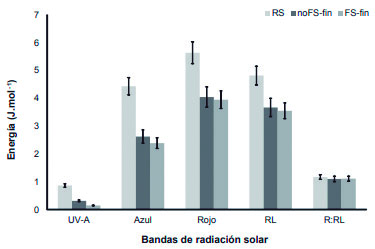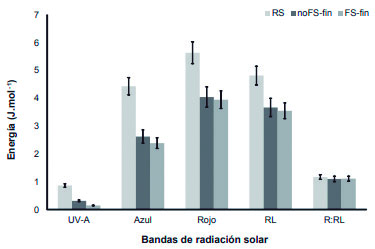Photocontrol of productivity and stem elongation of three Rosa x hybrida L. cultivars under photoselective films
Keywords:
RFA, R:FR, blue and UV-A radiation, roseAbstract

This research evaluate changes in the radiation transmitted through a photoselective, fluorescent polyethylene film (PS), and the impact of these changes on the production of three cut rose cultivars, Fuego Negro, Maroussia and Anna. PS vs. nonPS films, new or exposed to solar radiation, decreased transmission of blue radiation (-28.4 to -32.9%, PS-new and PS-old, respectively), increased red radiation, resulting in a R:FR ratio greater 3.6% than for nonPS, although, PS-new and PS-old films transmitted a smaller percentage of PAR than non-PS-new (-16.6 and -22.4%, respectively). The number of roses harvested was significantly higher under PS vs. nonPS film for the three cultivars (+24, +32 and +36% flowers m-2, in Anna, Fuego Negro and Maroussia, respectively), with significantly higher fresh weight (FW) and dry weight (DW), longer floral stems in Anna and Maroussia (50.69 and 43.91 cm vs. 38.91 and 40.04 in winter and spring, respectively) and buds significantly longer and higher FW and DW in the three cv. Higher R:FR and lower UV-A and B radiation of PS greenhouse covers increased quantity and quality of some of these rose cultivars featuring an alternative to chemical growth regulators.
Downloads

Downloads
Published
How to Cite
Issue
Section
License

This work is licensed under a Creative Commons Attribution-NonCommercial-ShareAlike 3.0 Unported License.
Aquellos autores/as que tengan publicaciones con esta revista, aceptan las Políticas Editoriales.










.jpg)




